
 SLB and TotalEnergies have announced a 10-year partnership to co-develop scalable digital solutions to enable access to energy resources with improved performance and efficiency while establishing a flexible framework to address key challenges including carbon capture, utilisation, and sequestration (CCUS).
SLB and TotalEnergies have announced a 10-year partnership to co-develop scalable digital solutions to enable access to energy resources with improved performance and efficiency while establishing a flexible framework to address key challenges including carbon capture, utilisation, and sequestration (CCUS).
The companies will integrate advanced digital capabilities, including the use of AI with new and existing applications on SLB’s extensible Delfi digital platform. SLB and TotalEnergies will combine digital and domain expertise to accelerate the development and deployment of these solutions at scale, benefiting TotalEnergies’ global operations and SLB’s worldwide customer base.
The partnership will initially focus on subsurface digital solutions for reservoir engineering and geoscience modelling and interpretation, leveraging Delfi on-demand reservoir simulation (ODRS).
Rakesh Jaggi, President of SLB’s Digital & Integration business, said, “Collaboration and knowledge sharing are key for our industry to continuously develop more effective ways of unlocking energy access. With this visionary partnership, we are combining the know-how and expertise of both companies to accelerate the delivery of new digital capabilities that will benefit the whole industry.”
Namita Shah, President, OneTech at TotalEnergies, commented, “Through this digital partnership we will develop cutting-edge next-generation software, digital applications and new algorithms applied to geoscience.
“Thanks to these innovative modelling technologies, we will not only be better able to utilise the analyses of geological reservoirs and basins in the oil and gas sector, to reduce emissions, but also make further progress in geological carbon storage.”
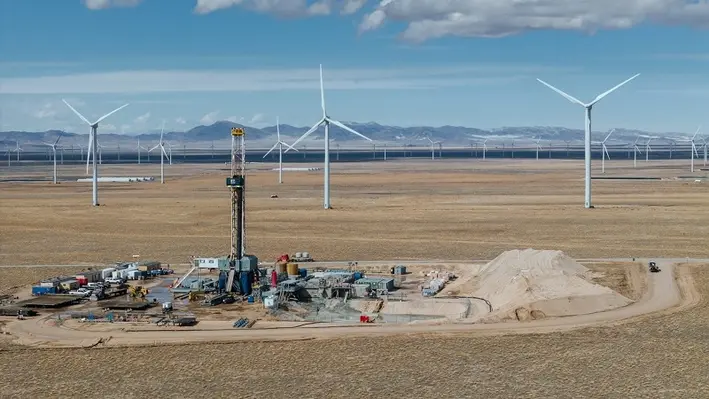
 Fervo Energy has announced the execution of two power purchase agreements (PPAs) with one of the US’ largest utility companies, Southern California Edison (SCE), for the provision of 320MW worth of geothermal energy to 350,000 homes across the state’s southern region.
Fervo Energy has announced the execution of two power purchase agreements (PPAs) with one of the US’ largest utility companies, Southern California Edison (SCE), for the provision of 320MW worth of geothermal energy to 350,000 homes across the state’s southern region.
SCE will purchase the power from Fervo Energy’s 400MW Cape Station project currently under construction in Utah, with the first 70MW phase of the project scheduled to be operational by 2026.
California Energy Commission Chair, David Hochschild, commented how the 15-year agreement marks “another milestone in California’s commitment to clean, zero-carbon electricity” and the enhanced geothermal systems will “complement our abundant wind and solar resources by providing critical baseload when those sources are limited.”
In 2021, the California Public Utilities Commission issued a mid-term reliability (MTR) mandate which requires utilities to produce 1,000MW of non-weather-dependent, non-battery, zero0emission energy to increase the reliability of the state’s electric grid. This movement catalysed demand for geothermal energy within California.
Dawn Owens, VP and Head of Development & Commercial Markets for Fervo Energy, said, “Geothermal stands as the dependable and adaptable solution for California’s journey towards a fully decarbonised grid. As electrification increases and climate change burdens already fragile infrastructure, geothermal will only play a bigger role in the US power markets.
“Fervo looks forward to continuing to meet these needs, providing firm, clean power to help balance California’s energy portfolio.”
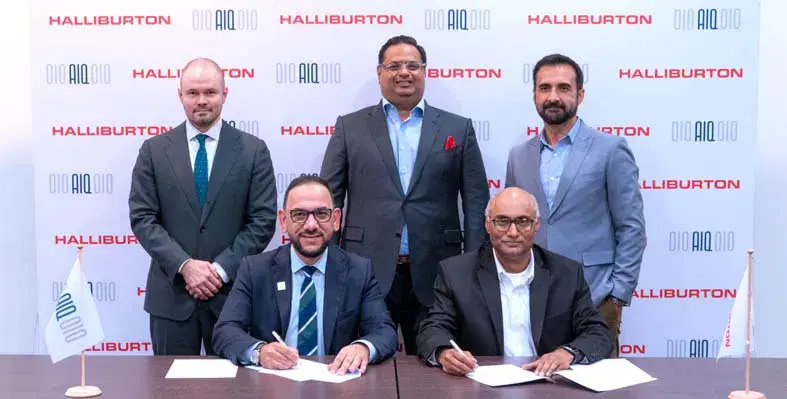
 Leveraging Halliburton's global reputation, Abu Dhabi-based energy tech provider AIQ has partnered with the oil service company's open architecture platform Landmark to expand access of its RoboWell autonomous well control (AWC) solution
Leveraging Halliburton's global reputation, Abu Dhabi-based energy tech provider AIQ has partnered with the oil service company's open architecture platform Landmark to expand access of its RoboWell autonomous well control (AWC) solution
"The combination of AIQ’s AI technology and Halliburton’s extensive industry expertise will help enable greater efficiency and maximise value for our customers’ assets," said Nagaraj Srinivasan, Senior Vice President, Landmark, Halliburton Digital Solutions, and Consulting. “This project exemplifies how Halliburton’s open architecture can help support enhanced efficiency, optimised operations, and drive future growth in the oil and gas industry."
Especially designed for gas lifted wells, RoboWell enables autonomous well operations to maximise production within specified conditions. The AI-supported advanced process control solution, which already has a market presence, boasts of a record achievement by up to 30% optimisation in gas lift consumption, with increased production of existing wells by 5%. Its well stability goals attained through real-time data utilisation also promotes not only good HSE practices but also reduced CO2 emissions.
AIQ CEO, Christopher Cooper said, "This collaboration will help progress our shared vision of how advanced AI solutions can transform the energy industry globally. Collaborating with Halliburton is part of AIQ’s wider strategy to accelerate the availability of our transformative AI products globally to support the sector through autonomous and other AI-based innovations."
The well control solution will now be made available through Halliburton’s Landmark iEnergy hybrid cloud to customers worldwide.
Landmark’s iEnergy is designed to deploy, integrate, and manage sophisticated exploration and production (E&P) applications, and connect assets in public or private cloud environments.
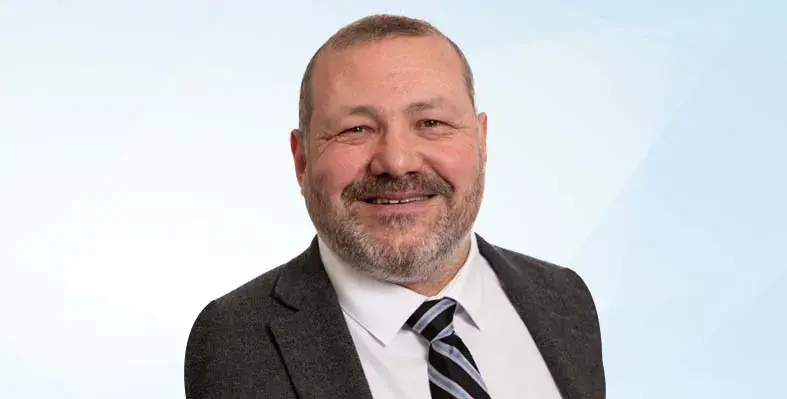
 Shell UK Ltd has signed a contract with Mermaid Subsea Services Ltd to utilise the offshore company's services for a multi-year engineering, preparation, removal and disposal (EPRD) well head severance (WHS) project in the North Sea.
Shell UK Ltd has signed a contract with Mermaid Subsea Services Ltd to utilise the offshore company's services for a multi-year engineering, preparation, removal and disposal (EPRD) well head severance (WHS) project in the North Sea.
Planned in three annual batches, the first phase of the decommissioning project is scheduled to begin later this year. The WHS solution will be delivered by a bespoke vessel for which Mermaid will be accumulating key stakeholders accross the supply chain.
The initial campaign will involve the removal of well head protection covers from the sea floor, before lifting them to the surface for transportation onshore.
The well head flow base structures will then be retrieved using specialist tooling.
The final activity will cover well head severance and recovery operations, for which bespoke underwater cutting tooling and techniques will be deployed by Mermaid.
Each stage of the project will be followed by clearance of debris, as well as seabed and over trawl surveys where necessary. All the recovered materials from the project will be put to reuse and recycling.
Scott Cormack, Regional Director for Mermaid Subsea Services (UK), said, “This a milestone contract for Mermaid and we are very grateful to Shell for putting their faith in our team. We look forward to kicking off work this year.
“The North Sea is on the cusp of a multi-decade decommissioning boom and Mermaid plans to be front and centre of that with our bespoke solutions and leading expertise.”
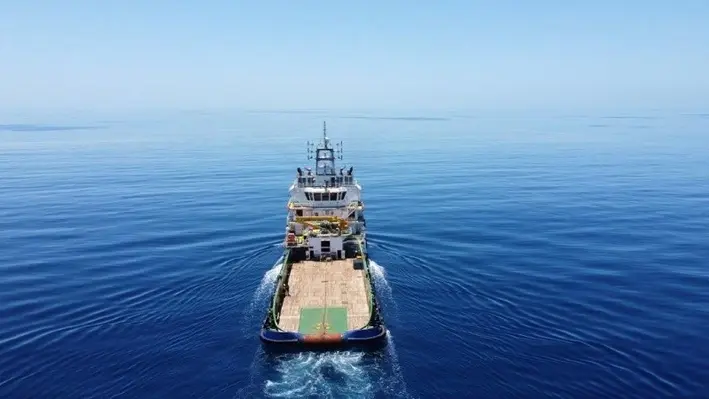
 Bhagwan Marine has partnered with Linch-pin to deliver the Thevenard Island Offshore Decommissioning Project contract for Chevron Australia.
Bhagwan Marine has partnered with Linch-pin to deliver the Thevenard Island Offshore Decommissioning Project contract for Chevron Australia.
With special focus on environmental sustainability, the retirement project involves safe removal and the repurposing of nine offshore platforms as reefs.
While Bhagwan Marine will be supplying the marine and diving spreads, Linchpin will cover engineering aspects and deploy skilled construction personnel.
A major win for Bhagwan Marine, the offshore services provider is aiming a seamless and successful execution of the project for Chevron. The company is confident of its expertise and ability to deliver complex projects of this nature.
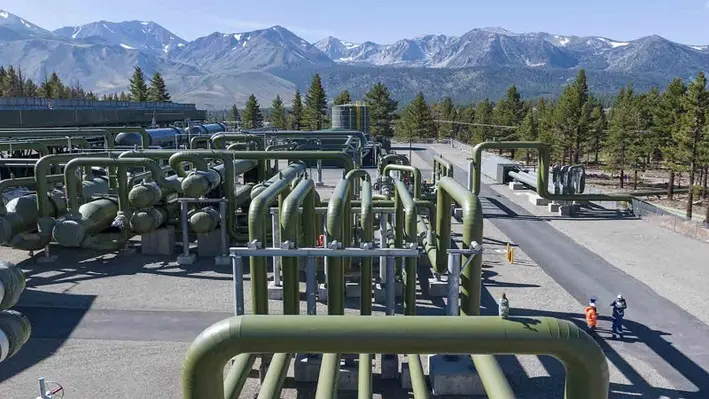
 SLB and Ormat Technologies have entered into a strategic collaboration to develop integrated geothermal projects which reduce the associated risks while improving overall economics and ensuring long-term reliability.
SLB and Ormat Technologies have entered into a strategic collaboration to develop integrated geothermal projects which reduce the associated risks while improving overall economics and ensuring long-term reliability.
The integrated offering will provide developers with a comprehensive suite of solutions, including exploration and resource assessments to power plant commissioning and operation.
Both SLB and Ormat will provide operators with traditional and next-gen geothermal solutions, such as enhanced geothermal systems (EGS) and advanced geothermal solutions (AGS), with SLB obtaining a license of Ormat’s ESG patent.
The collaboration combines Ormat’s expertise in geothermal fields and project development, power plant design, manufacturing, operations, and engineering, procurement and construction capabilities with SLB’s expertise in reservoir characterization, well construction, completions and production technologies.
Irlan Amir, Vice President of Renewables and Energy Efficiency for SLB, said, “Geothermal energy represents a significant opportunity for the energy transition, providing clean, baseload renewable power. By combining our expertise with Ormat’s, we can help customers unlock the full potential of geothermal resources and accelerate the deployment of this sustainable energy source.”
Paul Thomsen, Vice President of Business Development at Ormat Technologies, commented, “Ormat’s world class geothermal development and technology expertise perfectly complements SLB’s significant reservoir knowledge and well construction technologies and expertise. Together, we can deliver more projects, offering exceptional value to our developers and contributing to a cleaner energy future.”
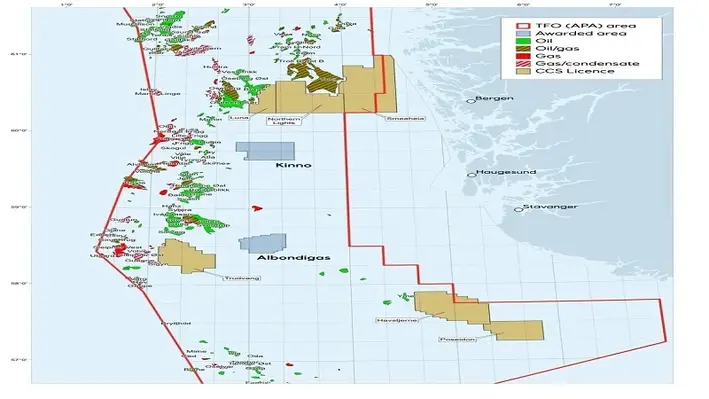
 The Ministry of Energy has awarded Equinor the Albondigas and Kinno licenses in the North Sea for CO2 storage development.
The Ministry of Energy has awarded Equinor the Albondigas and Kinno licenses in the North Sea for CO2 storage development.
Considered important building blocks for developing the Norwegian Continental Shelf into a leading area for CO2 storage in Europe, each of the licenses are expected to have a storage capacity of 5 million tons of CO2 annually.
"We are very pleased to see the Norwegian authorities have made new CCS storage acreage available for exploration and that we have been awarded these two licenses. We see that demand for CO2 storage is increasing in several countries, and it is crucial to bring forward new CO2 storages quickly, so that we can offer industrial solutions that can support large scale decarbonisation of hard-to-abate industries in Europe," said Grete Tveit, Senior Vice President for Low Carbon Solutions in Equinor.
Equinor expect 4-8% real base project returns for its early phase CO2 storage business, and further value uplift potential when commercial markets are developed.
Equinor is maturing a ship-based solution and a massive pipeline to connect industrial emissions in Europe with storage opportunities at the Norwegian Continental Shelf. The planned pipeline named CO2 Highway Europe will have capacity to transport 25-35 million tons of CO2 per year from Belgium and France.
The Albondigas and Kinno licenses will serve as additional storage opportunities to the Smeaheia storage license which was awarded to Equinor in 2022. Smeaheia will be used as the anchor storage for this pipeline development.
Equinor is also about to complete the first phase of the Northern Lights CO2 transport and storage facility together with Shell and Total Energies. It will be ready to receive CO2 by the second half of this year.
"Scale-up of CO2 transport and storage is essential to meet the interest and demand for this type of services. Gaining access to more CO2 storage capacity aligns well with our ambition of having 30 to 50 million tons of CO2 transport and storage capacity per year by 2035," said Tveit.
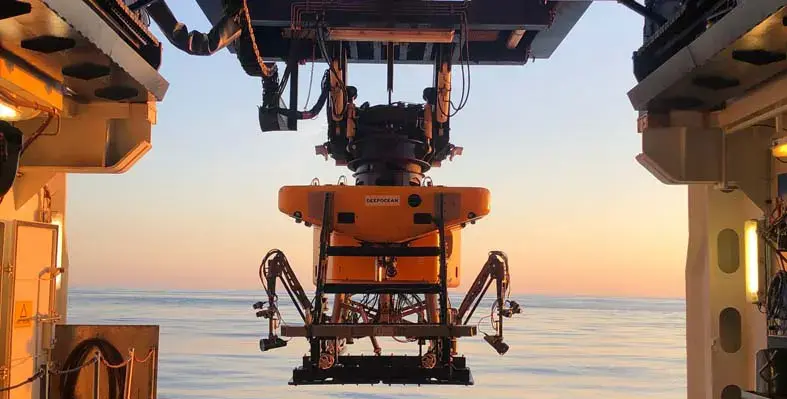
 Driven by a framework agreement signed with Woodside Energy (Senegal) BV, ocean services provider DeepOcean will be supervising subsea inspection, maintenance, and repair (IMR) services for the Sangomar field offshore Senegal, West Africa
Driven by a framework agreement signed with Woodside Energy (Senegal) BV, ocean services provider DeepOcean will be supervising subsea inspection, maintenance, and repair (IMR) services for the Sangomar field offshore Senegal, West Africa
“We have extensive experience from similar IMR operations offshore West Africa, but this is our first project offshore Senegal and with Woodside. We look forward to being Woodside’s subsea IMR supplier here over the coming years and to demonstrate our competence and extensive pool of specialist subsea tools and underwater assets,” said Øyvind Mikaelsen, CEO of DeepOcean.
Driven by 24 subsea wells and associated subsea systems that comprises of wellheads and subsea trees, in-line tees, manifolds, flowlines and risers, flowline-end terminals, and umbilicals, the project demands long-drawn services from DeepOcean. Its scope of work will include project management, engineering, and execution of subsea services such as inspection, survey, intervention, and maintenance, as well as additional services such as underwater inspection of FPSO (UWILD) and standalone ROV operations. The Norway-based provider will be supported by a Senegalese service company called Teranga Oil and Gas Services SARL.
“Sangomar is a large and impressive field development, with extensive subsea infrastructure. Our aim is always to inspect and maintain it as effectively as possible, thereby keeping costs and operational disturbances to a minimum for Woodside,” said Mikaelsen.
A project of strategic importance, the Sangomar oil field is supported by investments from the Africa Finance Corporation.
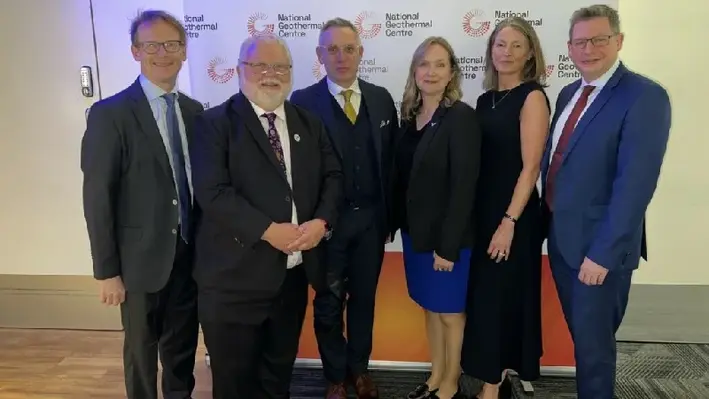

The UK National Geothermal Centre (NGC) has been launched to accelerate the UK geothermal sector and enhance the role it can play in decarbonising the UK’s future energy mix.
With funding from the Net Zero Technology Centre (NZTC), Durham University, SHIFT Geothermal, and The Reece Foundation, the NGC aims to support research and innovation, develop expertise and drive the creation of a policy, regulation and investment framework which enables geothermal advancement. It will drive collaboration between government, industry, and academia, promoting the integration of geothermal energy into the future renewable energy mix as a low carbon option for heating homes and industries, and power generation.
The geothermal sector has the potential to meet 10GW of the UK’s projected heating demand and 1.5GW of the anticipated electricity demand by 2050. Geothermal expansion could create 50,000 jobs for the future and result in an annual reduction of 10 million tonnes of CO₂ emissions.
Nigel Lees, chair of the NGC, said, “The launch of the National Geothermal Centre today represents a significant step in realising the opportunities that geothermal energy provides the UK. For several decades there has been a growing and meaningful contribution to our understanding of geothermal potential in the UK, yet we remain in the nascent stages of development with pockets of knowledge and expertise.
“The Centre will embrace and build on this, working collaboratively with all stakeholders to ensure a common understanding of the opportunities and challenges whilst giving a consistent voice and advocacy to fully unlock the geothermal potential in the UK and play a crucial part in the delivery of our net zero ambitions.”

 Following encouraging results from extensive surveys, INPEX Corporation has decided to go ahead with exploratory drilling for geothermal energy development in Shibetsu Town, Hokkaido, Japan.
Following encouraging results from extensive surveys, INPEX Corporation has decided to go ahead with exploratory drilling for geothermal energy development in Shibetsu Town, Hokkaido, Japan.
Since its nomination in the process of the 'Selection of Operators for the Musadake Region Geothermal Survey' in Shibetsu Town in 2020, INPEX has been conducting surface and geophysical surveys as well as drilling operations in the Sempo area northwest of Mount Musadake in the western part of Shibetsu Town. It took a positive turn as the company came across geothermal resources from the site, which can potentially actualise its net zero ambitions while expanding its clean energy business in Japan.
INPEX aims to accelerate its geothermal initiatives by tapping into the technologies it cultivated through oil and natural gas development. The company has plans to proactively engage in energy landscape development to help
realise a net zero carbon society while fulfilling its responsibilities for the stable development and supply of energy.
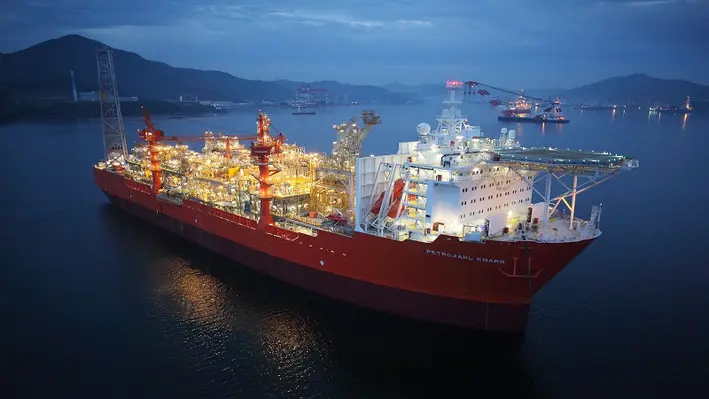
 Norwegian energy producer Equinor will deploy Emerson's suite of Roxar downhole monitoring tools to achieve optimal results from the Rosebank oil and gas field offshore the United Kingdom.
Norwegian energy producer Equinor will deploy Emerson's suite of Roxar downhole monitoring tools to achieve optimal results from the Rosebank oil and gas field offshore the United Kingdom.
With an estimated capacity of more than 300 million barrels of recoverable oil resources, the Rosebank field is considered a significant asset in meeting the UK’s energy security requirements. The first phase of the Rosebank field development will involve a refurbished, electrification-ready floating production storage and offloading vessel connected to a subsea production system. Startup of the Rosebank field’s first phase is planned for 2026-2027.
Emerson's advanced well completion monitoring systems enable advanced oil recovery techniques, optimise reservoir performance and verify well integrity in real time. A challenging task amid harsh environment conditions, the Roxar integrated downhole network technology provides an uninterrupted coverage of pressure and temperature data from active wells, which leads to safe operation, production optimisation and well integrity maintenance.
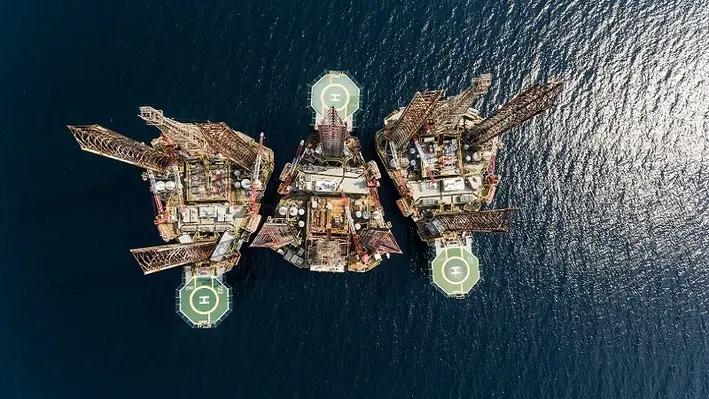

SLB, a global technology leader in the energy sector, has marked 55 years of operations in Angola where it played a vital role in supporting and developing the country’s energy landscape.
The milestone was celebrated at a grand gala event in Launda where distinguished guests were in attendance. This included Angola’s Secretary of State for Petroleum and Gas, H.E. José Alexandre Barroso, who took the opportunity to applaud SLB for its longstanding collaboration and support towards the country’s socio-economic development.
By leveraging its global footprint and extensive experience and providing its advanced technology solutions, the company has helped the country to optimise its oil and gas production. This has been vital to its continued development as oil and gas currently represents 96% of the country’s exports. At the present time, therefore, ensuring that energy production remains at a low-cost and as clean as possible has been described as vital for the nation’s future, and SLB remains committed to this end and driving energy innovation for a lower-carbon future aligned with these needs.
“55 years ago we took our first steps in Soyo-Zaire with the first log for Petrofina,” commented SLB managing director, Central, East and Southern Africa – Miguel Baptista. “Today, we have grown our foundation in Angola based on our core values of people, technology and performance. We have built on this by growing partnerships, igniting capacity and increasing local spend; providing opportunities to local businesses, investing in infrastructure and growing our revenue contribution. We will remain steadfast in the next 55 years and more to come; combining our expertise, resources, and vision, to make significant strides in shaping a sustainable energy future for Angola.”
Page 47 of 111